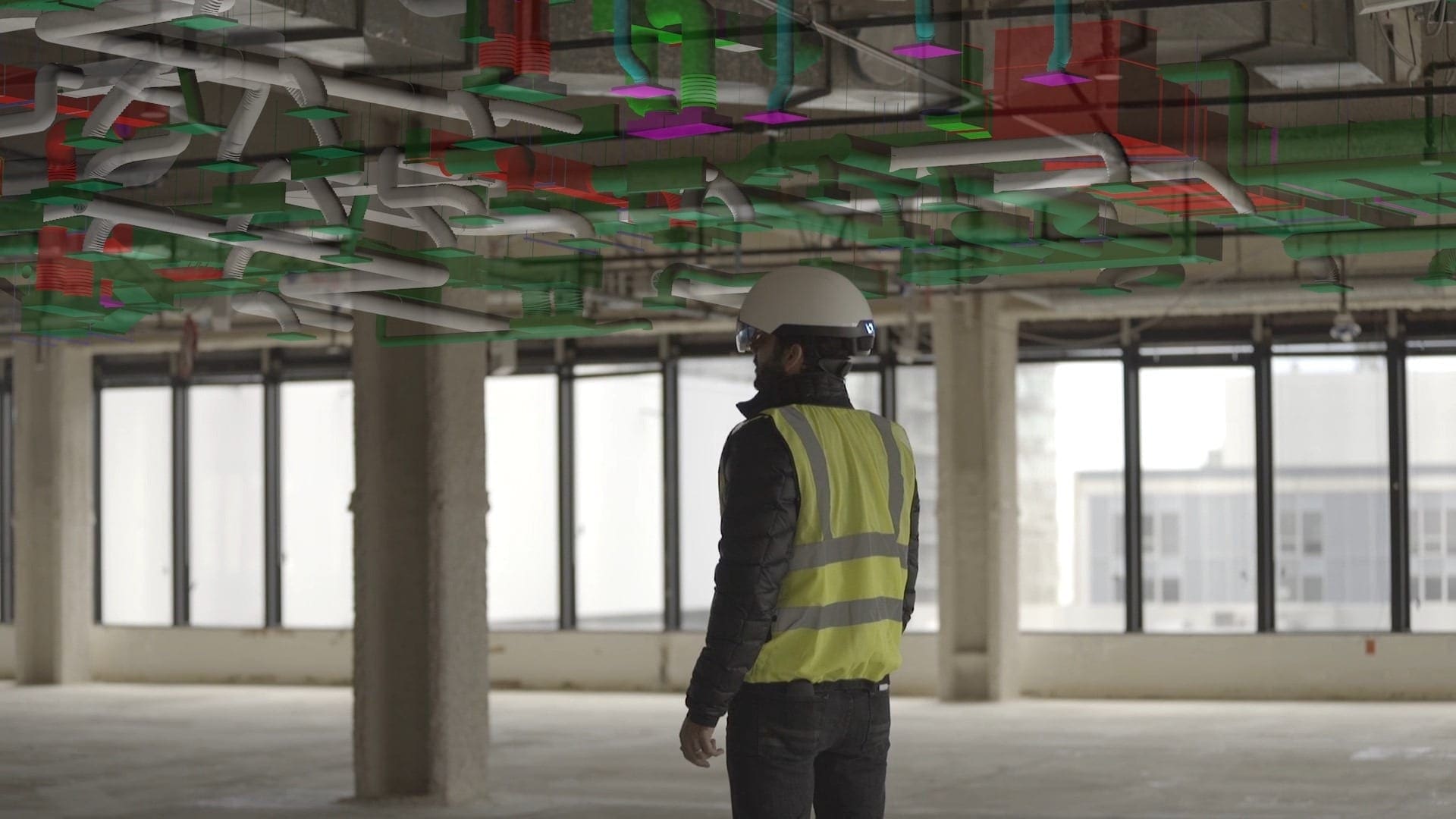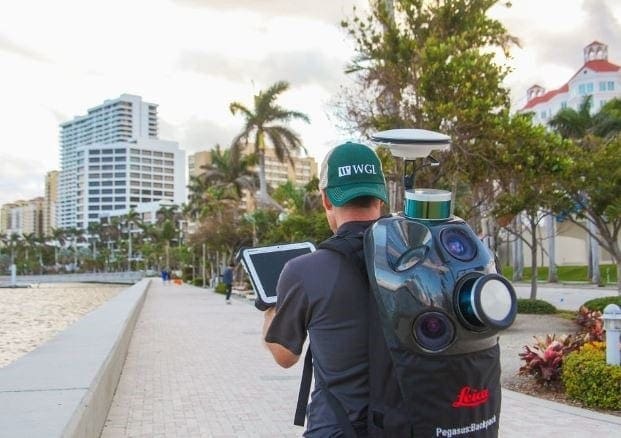Texas Medical Center Parking Garage Problems
Texas Medical Center made $78M from parking last year. Why haven’t its busiest garages been upgraded in years?
Learn from award-winning professionals — explore our whitepapers, blogs, and the latest industry updates.
Join our dynamic organization of engineers, land surveyors, landscape architects, environmental scientists, and architects!
Talk to a market leader today! We’ll answer any questions you have about our professional services.

“Innovate or die” has long been the motto of marketers, tech-savvy entrepreneurs, and those working on the cutting edge of the health and science industries.
Nevertheless, the word “innovation” seems absent in the construction sector. The construction industry is one of the oldest and largest in the world, playing a key role in the development and economic growth of all industrialized nations, yet we are using the same basic building techniques we have for over a century.
Let’s explore why that is, how the sector can benefit from implementing new technologies, and what firms can do to be part of the innovation wave—because the results point to one key conclusion: the construction industry needs innovation now more than ever.
It’s hard for some to gauge what exactly causes companies and industries to innovate, yet the answer is simple: the necessity for change. In the healthcare industry, the bionic eye and artificial heart exist because of the finite supply of healthy, compatible organs needed for the sick and injured. Telecommunication giants push the boundaries of smartphone technology to get ahead in a highly competitive market. So, what’s driving the construction industry?
Construction’s last major innovations were during the Industrial Revolution, brought about by population growth and business expansion. Today, the construction sector faces the dawning of another new age, and it has everything to do with environmental protection and population growth.
Based on a 2016 World Economic Forum report, the construction sector is the largest global consumer of raw materials in the world, responsible for approximately 30% of the world’s total carbon emissions. In this context, the aphorism “innovate or die” is quite real. Meeting the needs of rapid population growth is contributing to a decline in global environmental resources. The construction industry has a large role in fixing this dilemma. Rising sea levels add to the complexity of the situation. The Environmental Protection Agency estimated that between 1996 and 2011, 20 square miles of land were converted to open water along the East Coast of the United States due to rising sea levels.
Thus, the need to re-evaluate how we construct isn’t just pressing—it’s a matter of survival. It is time to prioritize sustainability in the construction sector and it cannot be done without innovation. This requires new technology, new building materials, and new sources of energy capable of maximizing efficiency and lowering our carbon footprint. It is absolutely vital we begin reshaping the industry today.
There is an abundance of new technology at our disposal. Utilizing drones for large surveying projects helps cut down on field time, increases survey precision, and reduces safety issues. Drones can monitor sites and report on project progress or potential problems. Virtual and augmented reality can help visualize every step of a project, with a realistic look at the final product. This helps by identifying potential problems early in the design phase—reducing or eliminating the rework process. In turn, there is an increase in the project’s profitability and a resource waste decrease. Waste reduction can also be achieved by using 3D printers already revolutionizing the healthcare and automotive industries. Moreover, these sophisticated printers can aid in creating more complex shapes that can be used in construction.

Other than technology, we can explore other building materials that can help reduce our use of raw materials. In the Netherlands, a scientist named Hendrick Jonkers developed the first bio self-healing concrete. When the concrete cracks, water infiltrates the concrete and activates a dormant bacteria that creates limestone. This makes the concrete more durable, lowering the maintenance cost, and reducing the amount of concrete needed. Another example of similar technology is Breathe Brick, which filters air before it has time to infiltrate a building. The bricks are formed from porous concrete and have an inner filter that acts as a vacuum, eliminating 30% of pollutants from the air.
Even now, certain construction approaches exist to help lower our industry’s carbon footprint by utilizing sustainable energy sources. In fact, renewable energy can be generated from the daily use of our infrastructure. The State of California is testing the process of generating energy from the vibrations caused by roadway traffic. A company called Pavegen used the same concept to extract energy from footsteps using high-tech prefabricated pavers. Portland Water Bureau and Riverside Public Utilities are also clean energy pioneers, adopting Lucid Energy’s new technology on their gravity fed water system by adding a turbine to control excess water pressure while generating energy. So, why don’t we see these technologies more readily implemented?
A 2016 survey conducted by KPMG showed that the construction industry’s biggest hurdle to implementing innovation is the stakeholders’ mindset. Construction companies don’t want to venture on “the road less traveled” in such a risky sector, where a miscalculated move can put a whole company on the line. Because of the aggressive timeline and budget allocated to each project with its relatively low profitability, there is a preference for traditional construction tools and time-tested processes. The other major challenge is the sheer number of players involved in any given construction project and their weight on the decisional scale. For example, a revolutionary material chosen by a developer may not be accepted by a regulatory agency or new VR hardware used by an architect may not be compatible with the old technology used by the engineering firm. The most pressing issue is the lack of investment in research and development within the construction sector. A 2013 EU Industrial R&D Investment Scoreboard shows that the construction industry is at the bottom of the list, with an investment of less than 1% of net sales. What is this telling us?
The data shows us that a change in the mindset of the industry and its shareholders is more urgent now than ever—that companies need to start adding innovation in their strategic plans as soon as possible—and that it is just a matter of time before we see the sector’s leading companies embracing this post-industrial era of construction. Sustainable construction with the use of new technology will not only boost productivity and increase profitability, but also create a safer work environment. The use of new technology will also attract more millennials, filling the gap left by the retiring baby boomers. Innovation isn’t just a choice — it’s a must.

WGI is a national design and professional services firm leading in technology-based solutions for the construction of public infrastructure and real estate development. At WGI, we’re providing Tomorrow’s Infrastructure Solutions Today.
Texas Medical Center made $78M from parking last year. Why haven’t its busiest garages been upgraded in years?

WGI, in collaboration with Leo A Daly, is honored to receive the 2024 AIA Palm Beach Merit Award of Excellence for our role in designing the lush, wellness-focused outdoor spaces of Toby & Leon Cooperman Sinai Residences’ new expansion. Discover how our landscape design enhances luxury senior living with resort-style amenities and inviting social spaces.

WGI proudly attended the 2024 CUTR Transportation Achievement Awards, celebrating impactful contributions and emerging leaders in Florida’s transportation sector. Dive in to learn more on how we’re continuing to propel the industry forward!

Join WGI SATX at the 10th Annual UTSA Engineering BBQ Cook-Off, where we served up smoky flavors, community connections, and a little STEM inspiration!

Discover the journey of minority women in civil engineering as they overcome challenges, redefine leadership, and build a more inclusive industry.

Discover how WGI is partnering with the City of Coconut Creek to reimagine Donaldson Park and Sunshine Drive Park with new recreational amenities, scenic trails, and enhanced landscapes—bringing innovative, sustainable design to the heart of the community.
You’ve been searching for a place like WGI. We look forward to meeting you soon.
Sign up to receive emails to hear our latest news and achievements in our monthly newsletter.
Enter your zip code, and we’ll personalize your experience with local projects, office locations, team members, and more.
WGI supports its associates with meaningful opportunities for growth, strong benefits and perks, while we work collaboratively with clients and co-consultants to shape and improve communities.






WGI is a dynamic organization with opportunities nationwide for engineers, land surveyors, landscape architects, environmental scientists, and architects.